
Oenosandridae is a family of Australian noctuoid moths. Genera include:

Atteva is a genus of moths in the monotypic family Attevidae. The group has a pantropical distribution; however, the range of at least one species, Atteva aurea, extends into the temperate zone. No consistent hypotheses regarding the relationships, placement, and ranking of Attevidae have been published, but the prevalent view is that they likely form a monophyletic group within the Yponomeutoidea.

Orgyia is a genus of tussock moths of the family Erebidae. The genus was described by Ochsenheimer in 1810. The species are cosmopolitan, except for the Neotropical realm.
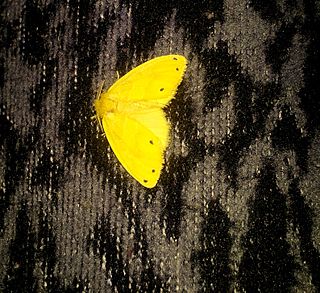
Artaxa is a genus of tussock moths in the family Erebidae erected by Francis Walker in 1855. Some of the species have urticating hairs.

Nygmia is a genus of tussock moths in the family Erebidae. The genus was erected by Jacob Hübner in 1820.

Netria is a genus of moths of the family Notodontidae erected by Francis Walker in 1855.
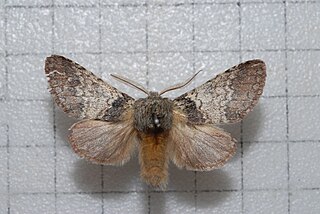
Pseudofentonia is a genus of moths of the family Notodontidae erected by Embrik Strand in 1912.
Syntypistis ambigua is a species of moth of the family Notodontidae first described by Alexander Schintlmeister and Cheng-Lai Fang in 2001. It is found in China and northern Vietnam.
Syntypistis jupiter is a species of moth of the family Notodontidae first described by Alexander Schintlmeister in 1997. It is found in China, India, Vietnam and Thailand.

Risoba is a genus of moths of the family Nolidae erected by Frederic Moore in 1881.
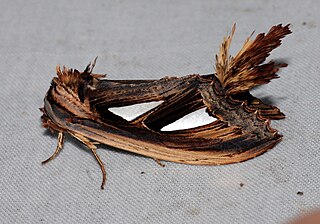
Tarsolepis is a genus of moths in the family Notodontidae erected by Arthur Gardiner Butler in 1872.

Gangarides is a genus of moths of the family Notodontidae described by Frederic Moore in 1866.

Somera is a genus of moths of the family Notodontidae. The genus was erected by Francis Walker in 1855.
Somera virens is a moth of the family Notodontidae first described by Wolfgang Dierl in 1976. It is found in the north-eastern Himalayas, Sundaland and the Chinese provinces of Hainan and Yunnan.
Pasiphilodes viridescens is a moth in the family Geometridae. It is found in Malaysia, New Guinea and possibly Borneo.
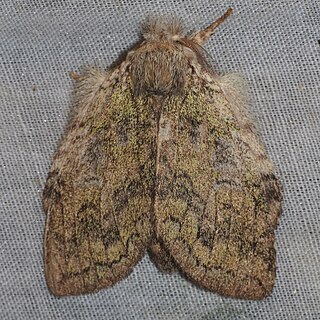
Parasinga is a genus of moths in the family Notodontidae described by Sergius G. Kiriakoff in 1967.
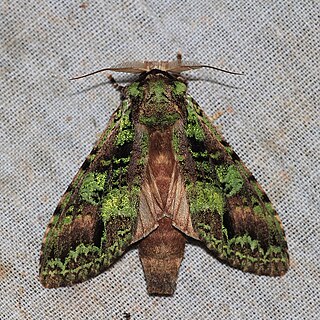
Oxoia is a genus of moths in the family Notodontidae described by Sergius G. Kiriakoff in 1967. Three species are known.
Paratrachea viridescens is a species of mossy sallow in the family of moths known as Noctuidae. It was first described by William Barnes and James Halliday McDunnough in 1918 and it is found in North America.
The Macroheterocera are a well supported clade of moths that are closely related to butterflies and macro-moths.














